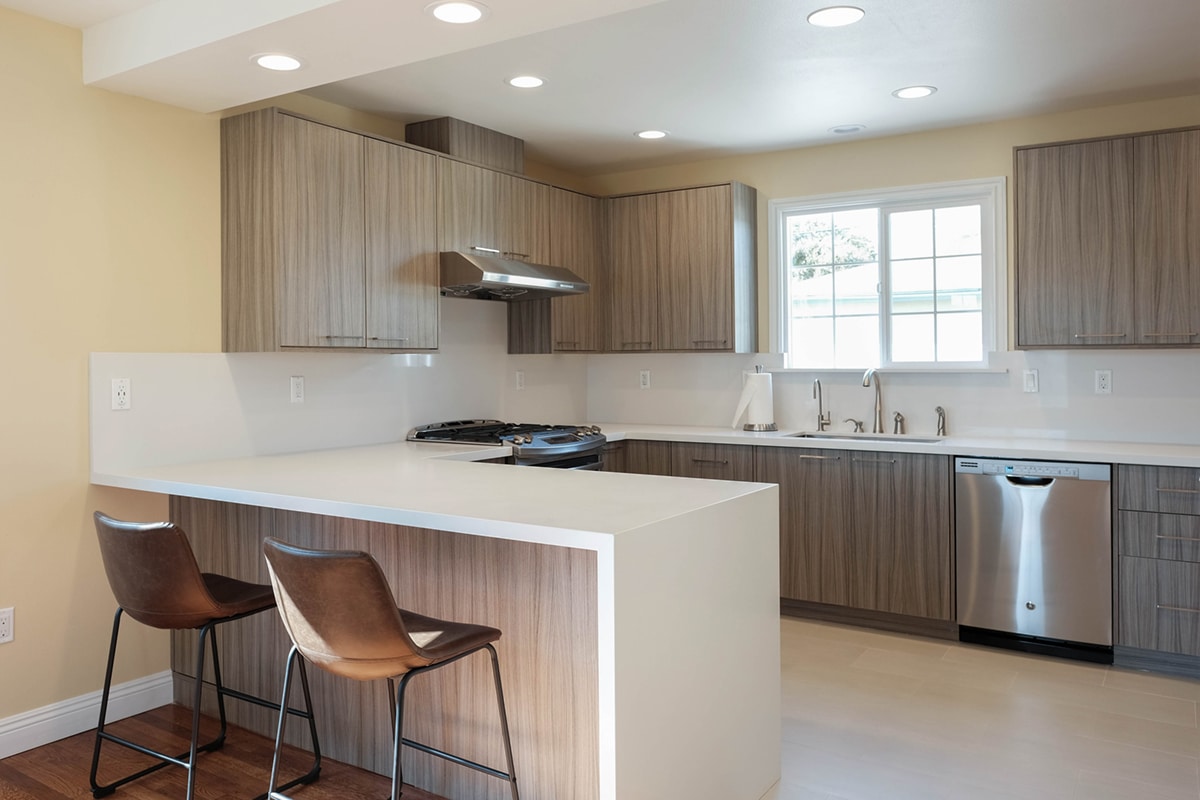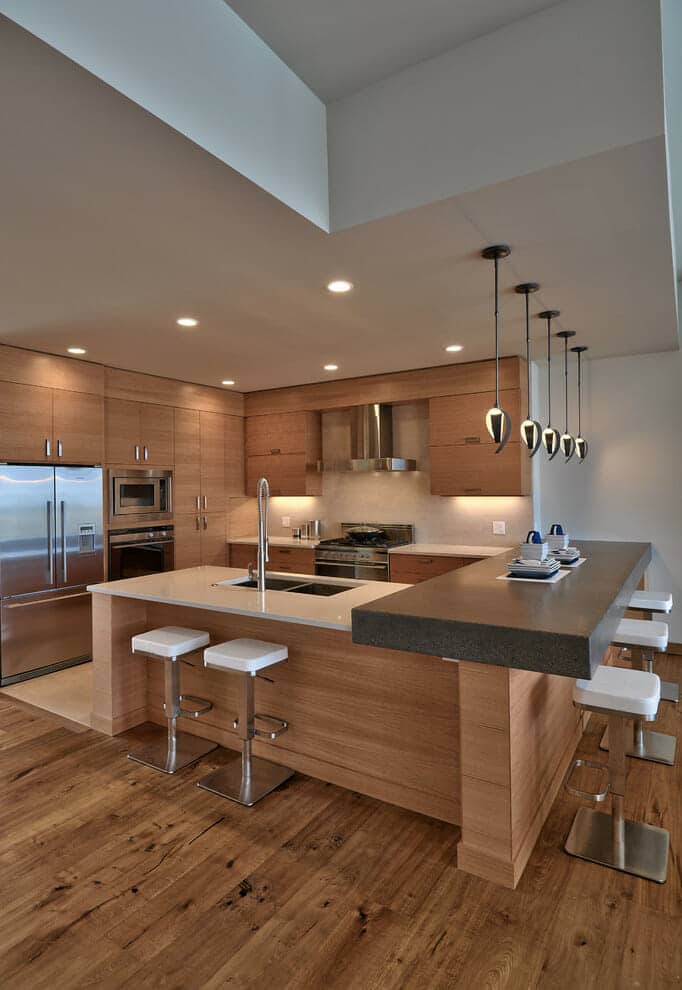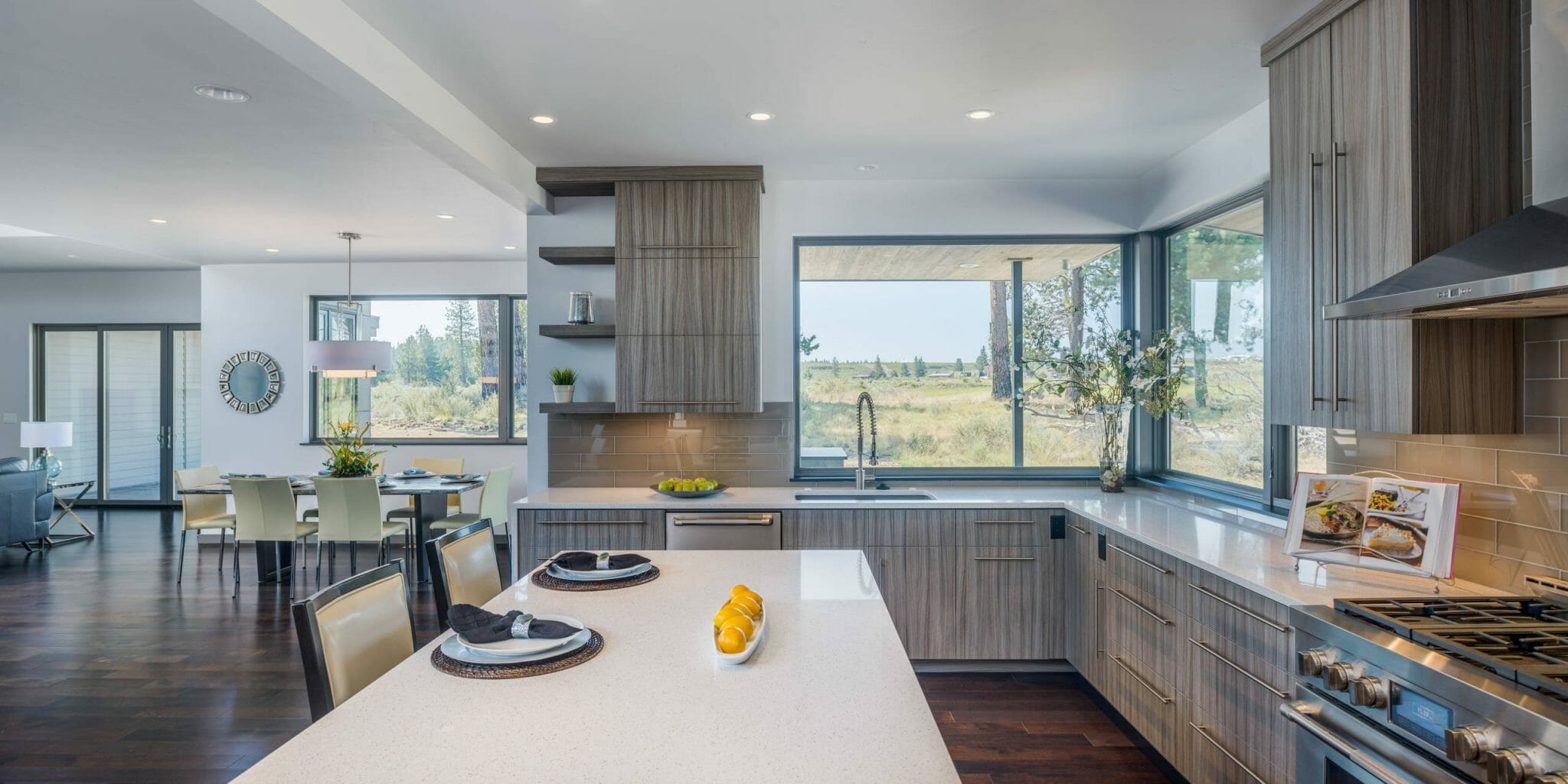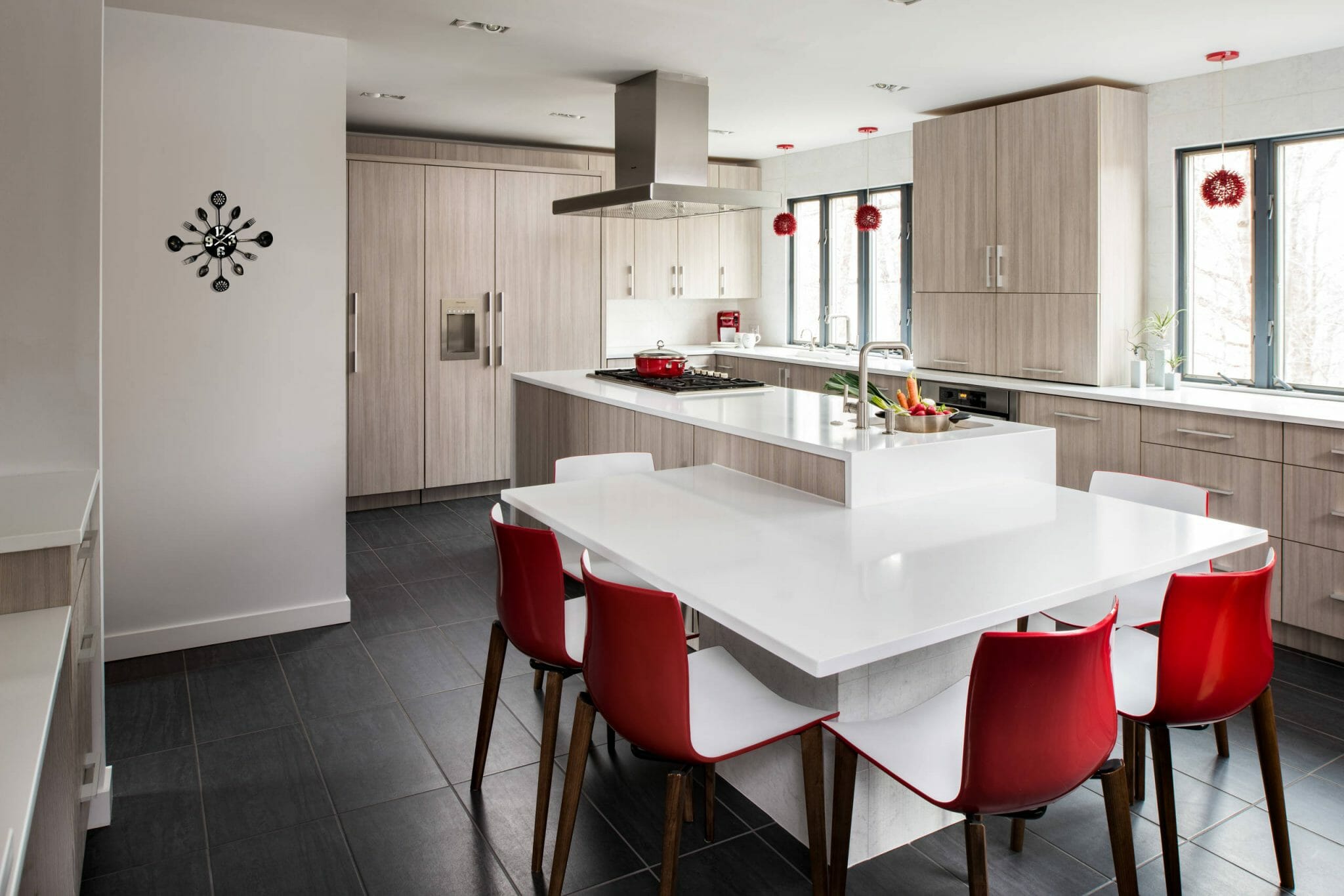
28 Nov Making Melamine Yours
A look at the science of Melamine kitchen cabinets
For the budget conscious they’re a lucky find. For the stylish eye they’re a sly choice. They are typically used for European style cabinets where synthetic substances are typically preferred over real or hard wood. I am speaking of the man-made material known as “Melamine”. Hang on folks, it’s about to get a little technical…
A substrate of pressed wood, medium density fiberboard (aka “MDF”) or plywood is heat-sealed between paper that is covered in a special resin. Thermally fused melamine combines with formaldehyde in a chemical melding process, thus serving to create larger and safer molecules. The resulting material is a more common form of melamine and it is popularly used as the primary substance from which to make the cabinets.
This can leave some confusion that needs resolving. Stories of melamine as this dangerous lab product need context. When discussed in the world of science, melamine is better known as “1,3,5-triazine-2,4,6-triamine” also called “Cyanuramide”, but it’s not the same material that makes up the kitchen cabinets composed of fused melamine and formaldehyde. It’s actually the chemically produced resin from the latter two that helps form the cabinets.
When it comes to kitchen cabinetry the so-called “melamine” is technically known as thermally fused melamine or “TFM”. If it sounds a bit crazy, you may wonder if it’s safe to have such chemicals in your home. It is. It’s been a staple of use among consumers and woodworkers for years. The TFM resin saturates decorative paper that is heat bonded to a substrate. It hardens when heated and thereby serves to fully protect the surface of the decorative paper, making it scratch resistant, colorfast and extremely durable.
The TFN is in fact solely on the surface of the pressed wood, plywood or MDF. That’s what makes these cabinets so popular and versatile. The TFM saturate paper can be printed in any pattern or color before the heat sealing process to the substrate. This freedom of design choice appeals not only to homeowners but to kitchen designers and remodelers as well.
Now that we’ve established that melamine is safe and practical, let’s look at some of the other pros and cons. For one thing, there is no danger of it splitting as real wood is prone to do. The TFM surface is very easy to clean and needs no finishing such as painting or staining. You don’t even have to worry much about maintaining it, and the surface wears well over time.
Most materials used in the melamine for the kitchen cabinets come from recycled wood scraps and sustainable growth forests. With the advantage of printed paper, many people strongly 
On the other hand, depending on the grade of the substrate it may not hold screws or anchors as firmly as preferred (not that they are necessary). And it is possible for an edge to break off, though unlikely. Although the material does not split, there are accounts of it shattering. It may also warp as it will absorb water readily. They are prone to getting wet – the closer they are to a sink the greater the chances. With its loose grip on screws, cabinet hinges eventually loosen, and the doors may sag as a result. Melamine is heavier than real wood and plywood.
Just as melamine may break so can it be repaired. The surface TFM layer may peel off or chip. When it peels, small areas can be glued down with a special adhesive that bonds to the MDF or other substrate. To get deep under the peeling substance, use a cotton swab to apply the glue.
If large portions have peeled up, roll it back with a cardboard tube – gently – and while the TFM is separated, thoroughly glue the surface of the substrate for a strong hold. For all such repairs, big or small, put wax paper over the affected area and clamp until it dries as tightly as possible.
If the cabinet experiences chips or larger cracks, fill the affected areas with wood filler of the same color. After it dries, you must sand the area. Finally, touch up that melamine paint finish. You may consider applying an enamel latex paint over the primer.
Save money when remodeling a kitchen by using melamine and reserve the extra cash for advanced elements of the kitchen like the popular induction or quartz countertops.





Sorry, the comment form is closed at this time.